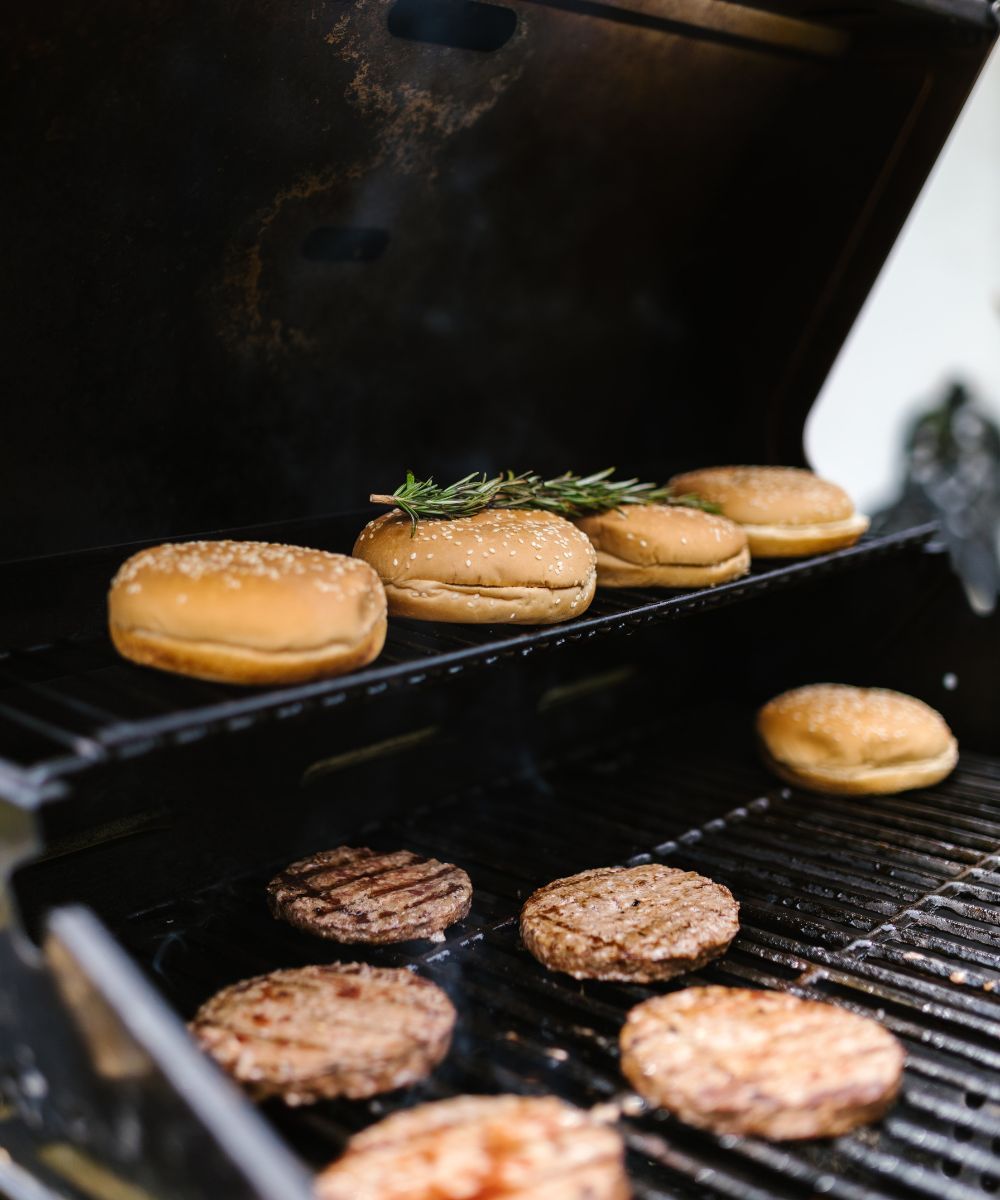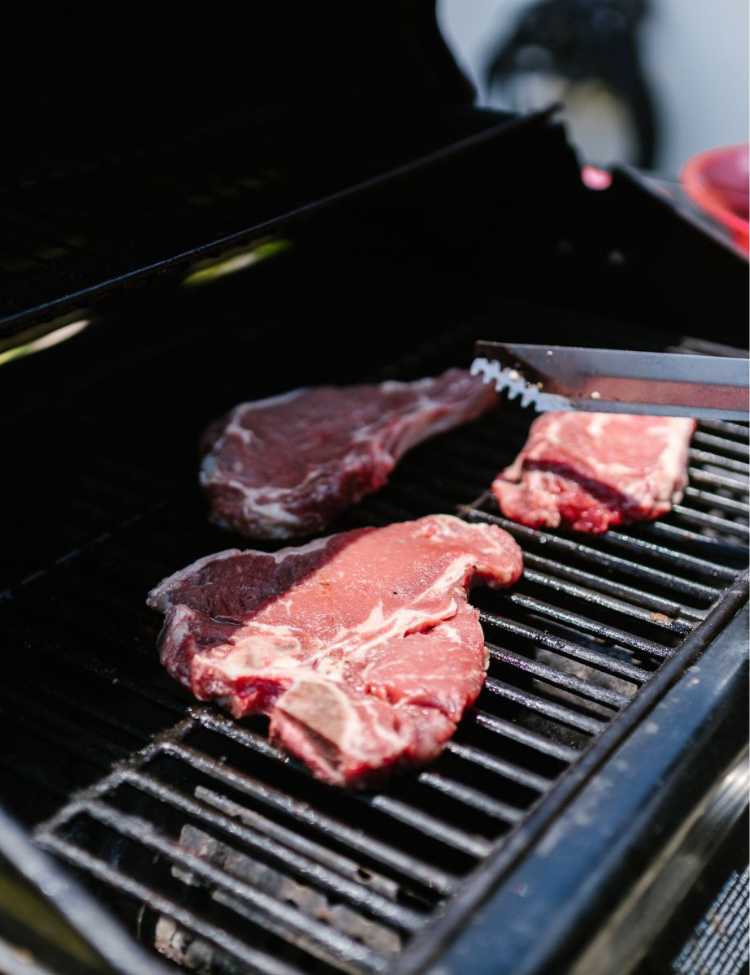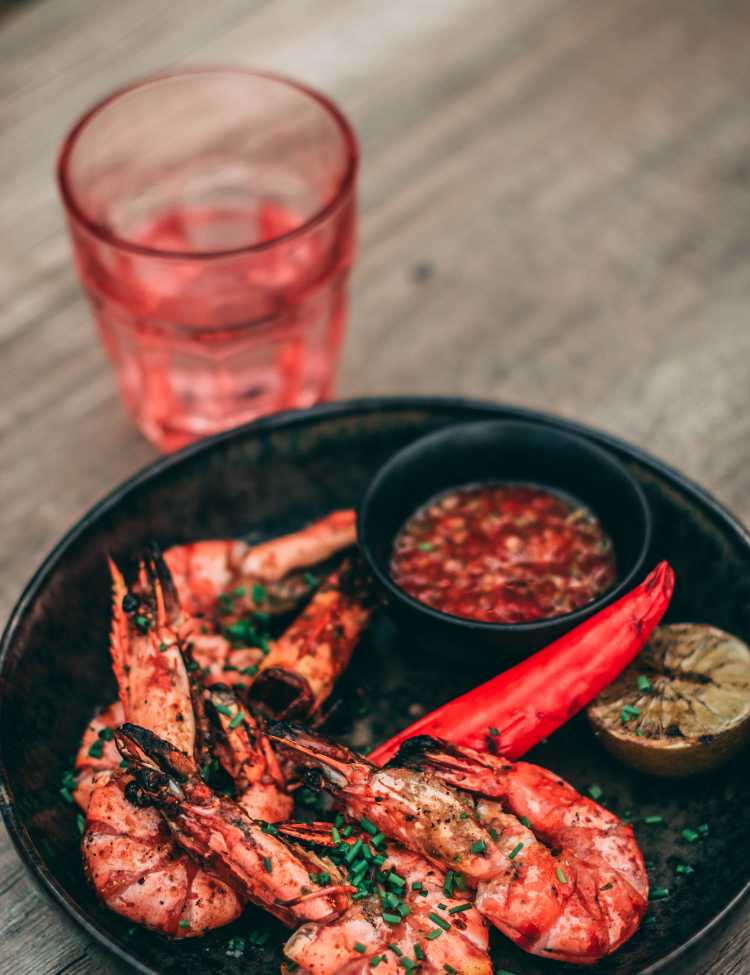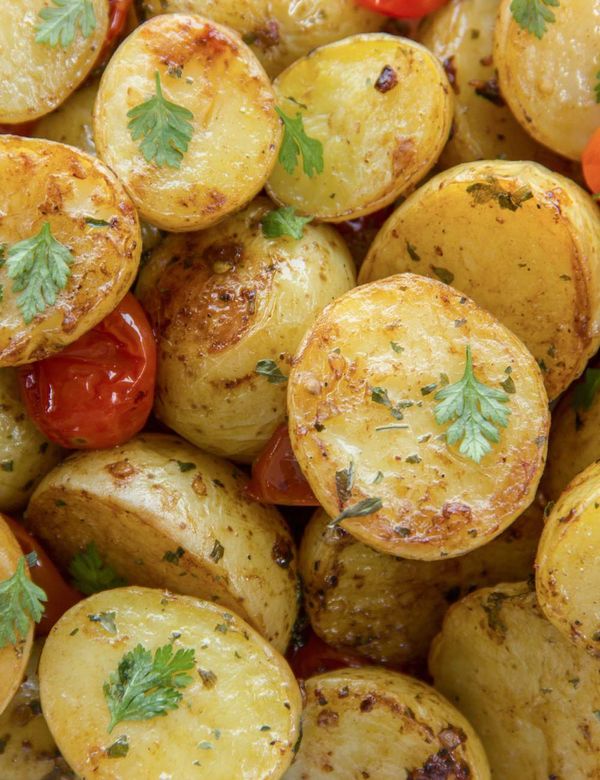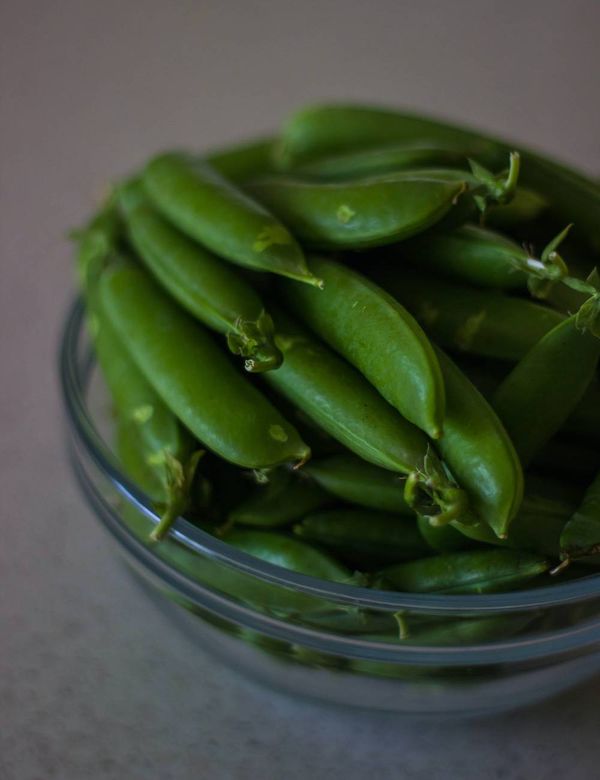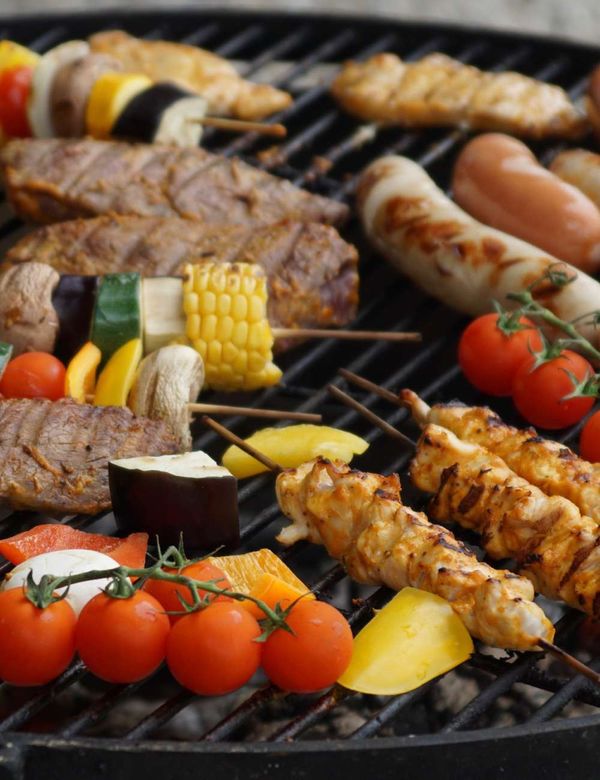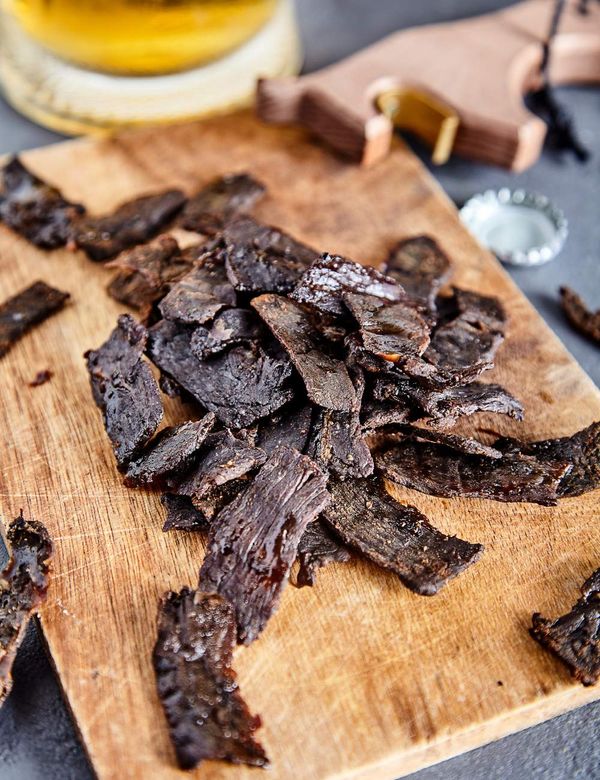Cooking a steak to perfection on a gas grill can seem like a daunting task, but with the right guidance and techniques, it can be quite simple.
This article aims to demystify the process and provide you with step-by-step instructions to achieve that perfectly seared, juicy, and flavorful steak, just like your favorite steakhouse, right in your backyard.

So, whether you're a grilling novice or an experienced home cook looking to refine your skills, this comprehensive cooking guide will help you master the art of grilling steak on a gas grill!
Key Points
•Choosing Quality Steak: Selecting the right cut of steak is crucial. Prime cuts like ribeye, sirloin, or filet mignon are ideal for grilling.
•Preparing and Seasoning: Season your steak with desired spices. Some purists prefer just salt and pepper, while others use a variety of seasonings.
•Use Direct and Indirect Heat: Start by searing your steak over direct heat, then move it to indirect heat to finish cooking. This gives you a nice crust and juicy interior.
•Don't Overcook: Use a meat thermometer to ensure your steak is cooked to your desired level of doneness.
•Let the Meat Rest: Resist the urge to cut into your steak right away. Letting the steak rest allows for more even cooking.

Choosing the Right Steak: A Guide to the Best Cuts for Grilling
Choosing the right steak for grilling involves understanding various cuts and their unique characteristics.
Some of the most popular cuts for grilling include Filet Mignon, Ribeye, New York Strip, T-Bone/Porterhouse, Top Sirloin, and Flat Iron.
Each cut offers a different level of tenderness and flavor depending on the amount of marbling, or fat distribution throughout the meat.
For instance, the Filet Mignon is known for its tenderness due to its fine marbling, while the Ribeye is prized for its rich flavor and generous marbling.

The New York Strip, T-Bone, and Porterhouse steaks are also excellent choices with a good balance of tenderness and flavor.
In contrast, the Top Sirloin and Flat Iron are leaner cuts, but when cooked correctly, they can still deliver a satisfying steak experience.
When selecting a steak, look for a good amount of marbling and opt for a thickness of about 1 inch for optimal grilling results.
Remember, the key to a tender, flavorful, and juicy steak lies in not overcooking it!
Prep Work: Seasoning Your Steak for the Gas Grill
Preparation is key when it comes to achieving a perfectly grilled steak.
Before you start grilling, it's essential to properly season your steak to enhance its natural flavors.
Start by choosing the right type of steak, such as a Ribeye or a New York Strip, both known for their excellent marbling and flavor profile.
Once you have your steak, take it out of the fridge about an hour before you plan to cook it.
This allows the steak to reach room temperature, ensuring even cooking. When it comes to seasoning, simplicity is often best.
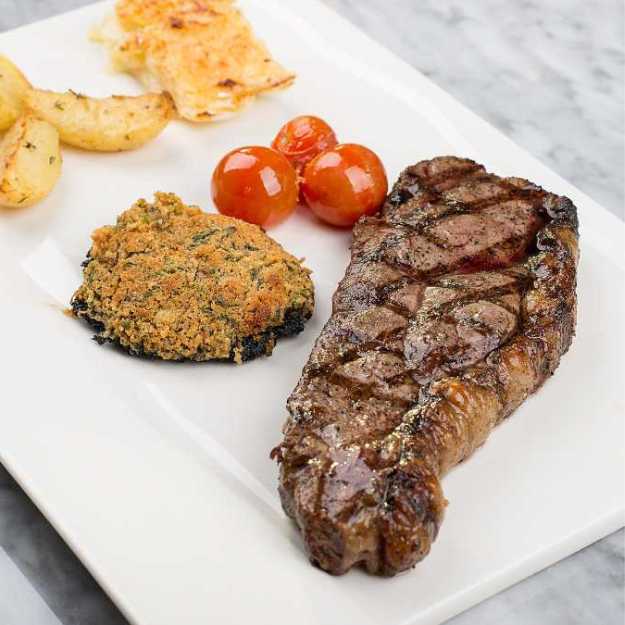
Lightly brush both sides of the steak with olive oil, which aids in heat transfer and helps the seasoning stick to the meat.
Then, generously season your steak with coarse kosher salt and freshly ground black pepper.
The coarse salt crystals will adhere nicely to the meat, creating a delicious crust when grilled.
Some people also like to add garlic powder, onion powder, or other herbs and spices for added flavor.
Remember to let the steak sit for about 45 minutes after seasoning.
This allows the salt to create a brine that not only tenderizes the steak but also enhances its flavor.
Avoid marinating the steak for more than 24 hours as it can make the meat mushy.
Now you're ready to grill the perfect steak with proper seasoning!
The Perfect Temperature: Preheating Your Gas Grill
Preheating your gas grill to the perfect temperature is a critical step in achieving a well-cooked, flavorful steak.
An ideal grilling experience begins with turning your grill on high and allowing it to preheat for about 10-15 minutes.
This initial high heat will help kill any bacteria present and burn off residue from previous grilling sessions.
The preheating process also helps to heat the cooking grates, which sears the steak quickly, locking in juices and flavor.

Once preheated, you'll want to adjust the temperature based on the cut and thickness of your steak.
For instance, thicker cuts like a Ribeye or T-Bone might require a lower temperature, around 325-350°F, to ensure they cook evenly without burning the outside.
Thinner cuts, such as Flank or Skirt steak, can handle higher heat, around 450-500°F.
Remember to use a good quality grill thermometer, as built-in thermometers can often be inaccurate.
Also, consider using a two-zone cooking method, where one side of the grill is hotter than the other, providing a safe area to move your steak if flare-ups occur or if it's cooking too quickly.
Grilling Techniques: Mastering Direct and Indirect Heat
Mastering the art of grilling requires understanding and effectively using two fundamental techniques: direct and indirect heat.
Direct heat grilling involves cooking food directly over the flames or heat source.
This method is best for foods that cook quickly, such as thin cuts of meat, fish, and vegetables.
It results in a delightful sear, giving your food attractive grill marks and a flavorful crust.
On the other hand, indirect grilling is designed for larger or tougher foods like whole chickens, roasts, or thick steaks that would burn if direct grilled.
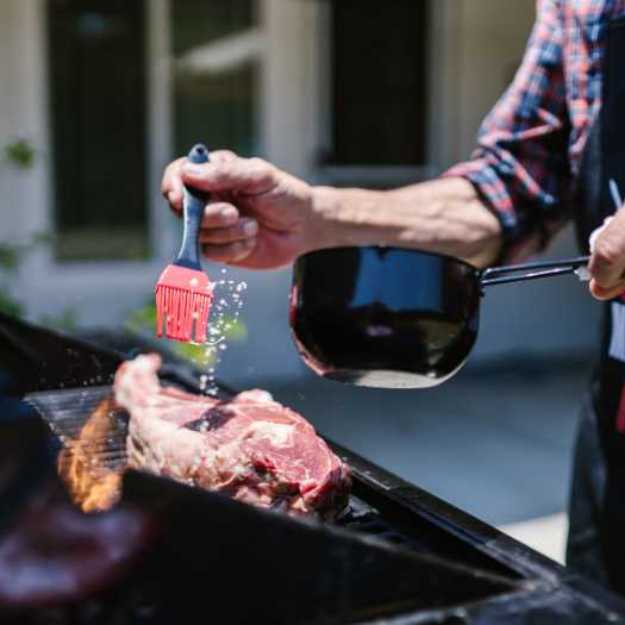
As the name suggests, the food is placed next to, not directly over, the heat source.
This method is similar to baking, where the grill's lid is closed to trap and circulate the heat around the food, cooking it evenly and slowly.
Some grillers use a combination of both techniques, called zone grilling.
They start by searing the food over direct heat and then move it to the area of indirect heat to finish cooking.
By understanding how to use direct and indirect heat, you can master the art of grilling and create delicious meals with ease!
Achieving the Perfect Sear: Tips for Grilling Steak on a Gas Grill
Achieving the perfect sear when grilling steak on a gas grill is an art that involves careful preparation and precise temperature control.
To start, ensure your steak is at room temperature before grilling to allow for even cooking.
Preheat your gas grill to a high temperature, typically between 450°F to 500°F.
This high heat is critical for creating a caramelized, flavorful crust on the steak.
Once the grill is preheated, place the steak on the grill grates, ensuring it's directly above the heat source to benefit from direct heat.
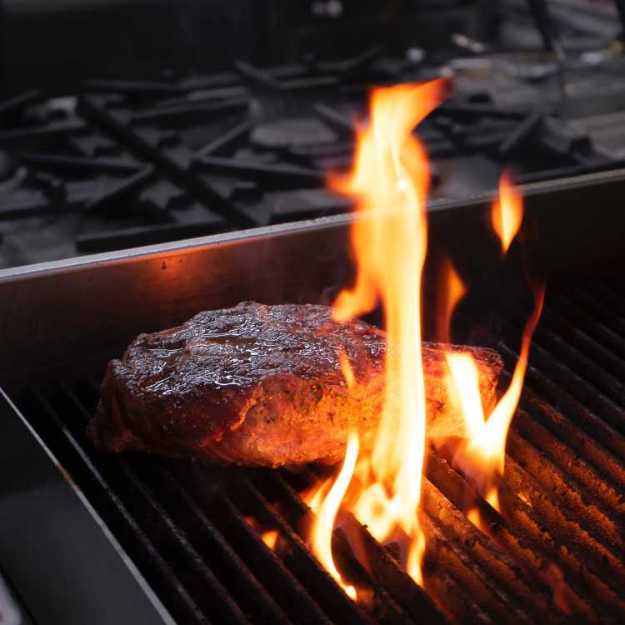
Sear each side of the steak for about 2-3 minutes without moving it, which helps create those coveted grill marks.
Importantly, resist the temptation to flip the steak too early or too often; a good sear requires patience.
After searing, move the steak to a lower heat area of the grill to finish cooking to your preferred level of doneness.
Finally, let the steak rest for a few minutes after grilling to allow the juices to redistribute throughout the meat, resulting in a moist, tender steak with the perfect sear.
Steak Turnover: When and How to Flip Your Steak
The process of turning over your steak on the grill, often referred to as "flipping," is a crucial aspect of grilling that can significantly impact the steak's final taste and texture.
To start, ensure your grill is adequately preheated, typically to a high heat of 450-500°F for searing.
Place your steak on the grill over direct heat and let it sear undisturbed for about 2-3 minutes.
This initial searing helps to lock in juices and create a flavorful crust.
When it's time to turn the steak, use a pair of tongs or a spatula instead of a fork, which can pierce the meat and let out precious juices.
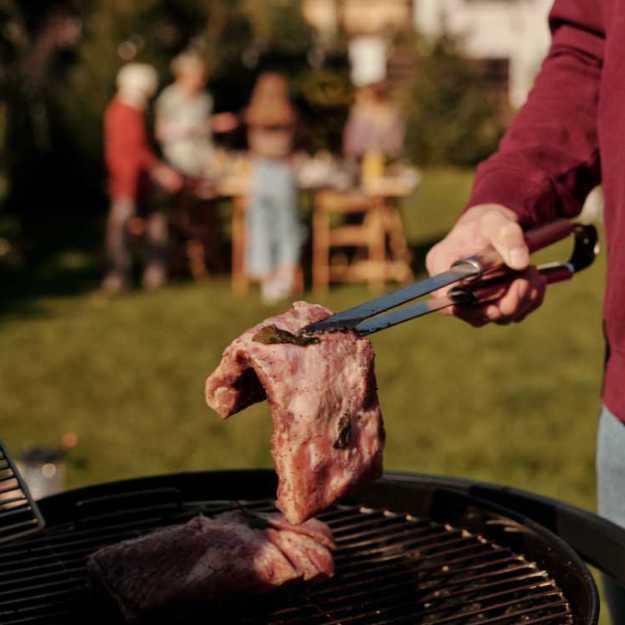
The steak should release easily from the grill grates when it's ready to be flipped; if it sticks, give it another minute before trying again!
Once flipped, allow the steak to sear on the other side for another 2-3 minutes. Then, move it to an area of indirect heat to continue cooking to the desired level of doneness.
Some grill masters rely on the "flip once" rule while others advocate for multiple flips throughout the grilling process, arguing it promotes even cooking.
Whichever method you choose, remember to never press down on the steak while it cooks, as this can squeeze out moisture and result in a dry steak.
Mastering Doneness: Using a Meat Thermometer Correctly
Mastering the doneness of your steak requires the correct use of a meat thermometer.
This tool can accurately gauge the internal temperature of your steak, ensuring it's cooked to your preferred level of doneness without overcooking.
To use a meat thermometer properly, insert the probe into the thickest part of the steak, avoiding any bones or fat, as they can give inaccurate readings.
For large cuts of meat, insert the thermometer from the side to reach the center.
If using an instant-read thermometer, leave it in place for about 15-20 seconds to get an accurate reading.
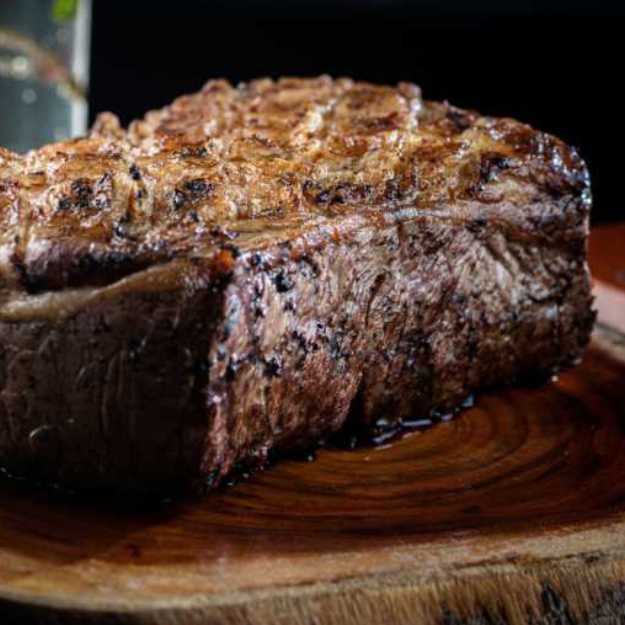
Keep in mind that different cuts and types of meat have different recommended internal temperatures for optimal safety and taste.
For instance, a medium-rare steak should register an internal temperature of 130-135°F, while a medium steak should be around 140-145°F.
Also, remember to account for carryover cooking, as the steak's temperature will continue to rise by 5-10 degrees after it's removed from the heat.
Finally, cleaning your thermometer after each use is crucial to avoid cross-contamination.
By learning how to use a meat thermometer correctly, you can ensure perfectly cooked steak every time.
Safety First: Ensuring Your Steak is Cooked Properly
Ensuring the safety of your steak begins with proper handling and cooking techniques.
It's essential to store raw steak in the refrigerator at 40°F or below until you're ready to grill, reducing the risk of bacterial growth.
Before grilling, let the steak sit out for about an hour to reach room temperature. This promotes even cooking, which is key to food safety.
When it's time to grill, preheat your grill to the correct temperature to kill off any bacteria.
Use a meat thermometer to ensure your steak reaches the right internal temperature for safe consumption.
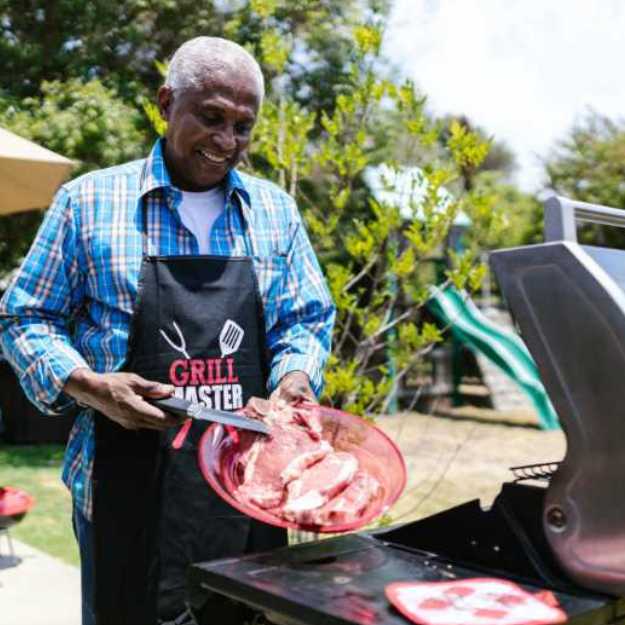
According to the USDA, steaks should be cooked to a minimum internal temperature of 145°F with a three-minute rest time for safety.
However, for those who prefer their steak medium-rare, the internal temperature should reach at least 130-135°F, followed by a rest period.
Remember that these temperatures are guidelines, and individual preferences may vary.
After grilling, let the steak rest to allow the juices to redistribute throughout the meat, enhancing flavor and tenderness.
This rest period also allows the steak to continue cooking slightly, reaching its final safe temperature.
Finally, always clean your grill and utensils after use to prevent cross-contamination.
By following these safety guidelines, you can enjoy a delicious, safely cooked steak.
Resting Your Steak: The Final, Crucial Step in Grilling
Resting your steak after grilling is the final, crucial step in the cooking process.
Once you've grilled your steak to the desired level of doneness using a meat thermometer, it's important to allow it to rest for a period before cutting into it.
This rest period, typically around 5-10 minutes for steaks, allows the juices that have been driven to the center of the steak during cooking to redistribute throughout the meat.
If you cut into the steak immediately after removing it from the grill, these flavorful juices would spill out onto the plate, resulting in a drier steak.
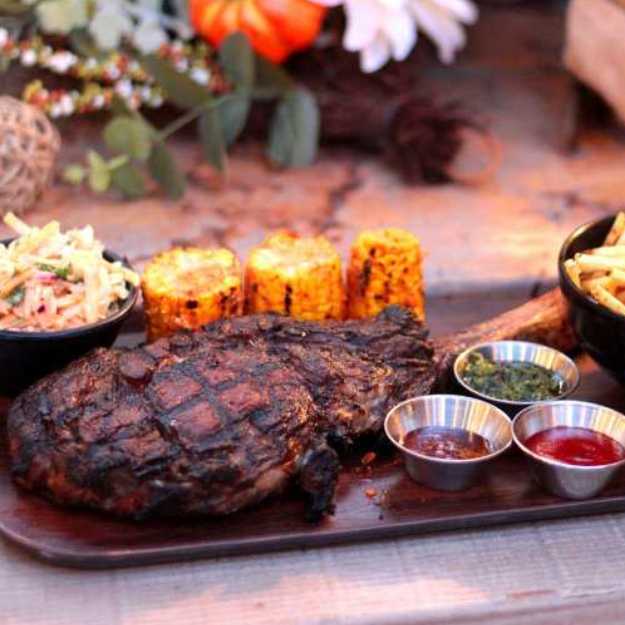
By resting the steak, you're ensuring it remains juicy and tender.
During this rest period, the steak also continues to cook slightly due to residual heat, a phenomenon known as carryover cooking.
Therefore, you should remove the steak from the grill when it's about 5-10 degrees below your target temperature.
To keep the steak warm while it rests, loosely tent it with aluminum foil.
This simple but crucial step helps ensure that you grill steak perfectly cooked, flavorful, and juicy every time!
Adding Flavor: Tips for Seasoning and Sauces on Grilled Steak
Adding flavor to grilled steak involves a combination of seasoning techniques and the use of sauces.
One fundamental way to introduce flavor is through a dry rub, which can include a variety of spices and herbs like cumin, garlic powder, onion powder, paprika, and crushed red pepper.
These ingredients enhance the meat's natural flavors and add complexity to the overall taste.
Another option is a marinade, typically a mixture of oil, an acid, and herbs that the steak is soaked in before grilling.
While marinades do not necessarily penetrate deep into the meat, they help to tenderize the surface and add a layer of flavor.
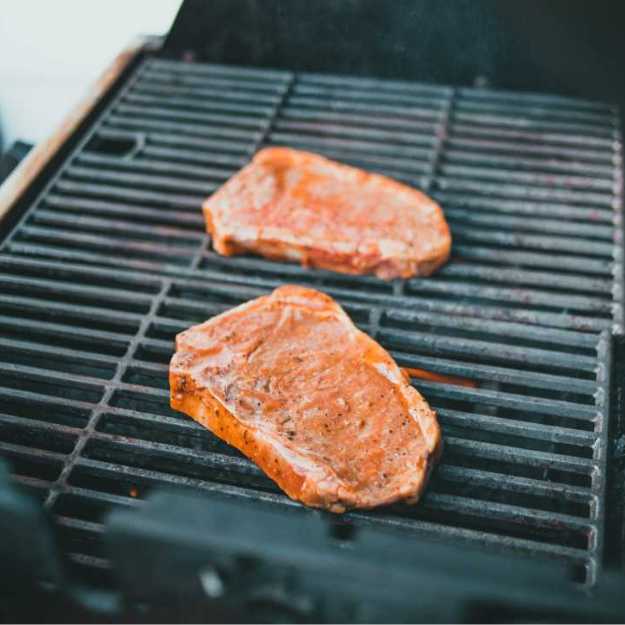
Alternatively, you can try a paste made by pureeing dry rub ingredients with liquids such as lemon juice, tomato juice, soy sauce, or apple cider.
For a quick and easy flavor boost, try rubbing your cooked steak with a halved clove of garlic.
Beyond these methods, a well-seasoned steak starts with the basics: kosher salt and freshly ground pepper, applied generously before grilling.
After grilling, consider finishing sauces or compound butters for an extra burst of flavor.
By experimenting with different seasonings, marinades, and sauces, you can elevate simple grilled steak recipes to a gourmet masterpiece.
Grilling Steak On a Gas Grill: FAQ Section!
After that guide, we hope you've learned a lot!
Although we don't expect you to retain all of the information we've just listed, that's where our FAQ Section comes in!
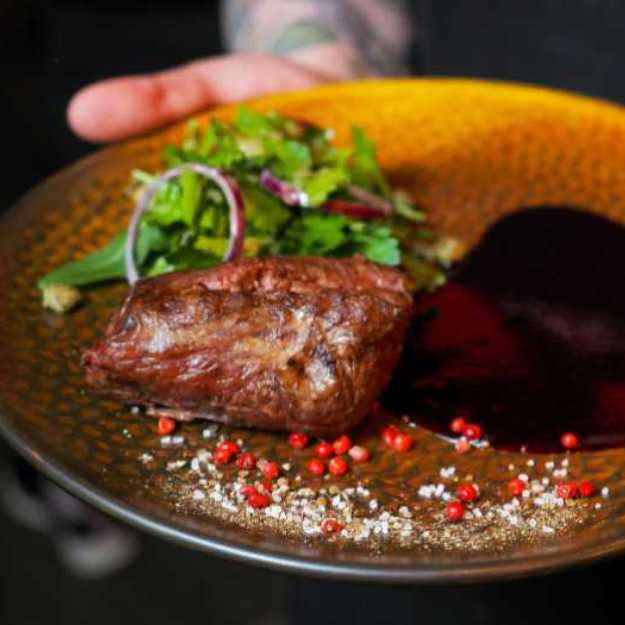
Down below you'll find our answers to the most commonly asked questions when it comes to grilled steaks on a gas grill.
Get your unanswered questions solved, so you don't have to do another internet search!
What are the best cuts of steak for grilling?
The best cuts of steak for grilling are rib eye, sirloin, skirt steak, and flank steak.
Ribeye is the most popular cut with a good amount of fat marbling giving it an intense flavor when cooked.
Sirloin is a leaner cut than ribeye but still has a great flavor when cooked to medium-rare.
Skirt steak has more texture than other cuts and should be cooked quickly over high heat to get the desired results.
Finally, flank steak has an amazing texture and intense flavor but can easily become tough if overcooked.
Should I marinate my steak before grilling?
Yes, marinating your steak before grilling will help ensure that it cooks evenly and has a juicy flavor.
Marinating meats helps to tenderize the meat and gives you an opportunity to add flavors.
A basic marinade will consist of lemon juice or vinegar, oil, salt, pepper and any herbs and spices you would like to include.
How do I prepare my steak for grilling?
To prepare steaks for grilling, season the steak generously with salt and pepper on both sides, then let it sit at room temperature for about 30 minutes.
Once the steak seasoning has had time to set into your steak, brush it lightly with oil or butter before placing it on a preheated grill.
Do I grill steak with the lid open or closed on a gas grill?
There is no one-size-fits-all answer to this question as it depends on the type of steak you are grilling.
For thin steaks, such as flank steaks, it's best to keep the lid open so that they cook quickly and don't become dry.
Thicker cuts of steak, such as ribeye or New York strip steaks, benefit from a longer cooking time with the lid closed – this helps them develop more flavor and achieve an even texture throughout.
What is the ideal temperature for grilling steak on a gas grill?
For the ideal steak grilling results, you should turn your gas grill to high heat and preheat it for 10 minutes before cooking.
The ideal temperature for grilling steaks on a gas grill is between 400°F and 475°F.
At this temperature, steaks will cook quickly while still achieving deep searing marks that create flavor.
How long should I grill my steak on each side?
It depends on the thickness of the steak and your desired doneness.
For a 1-inch thick steak, cook for 3 minutes on each side over medium-high heat for a medium-rare doneness.
Reduce or increase time per side based on desired doneness and steak thickness.
How do I know when my steak is done grilling?
To determine when your steak is done grilling, begin by checking the internal temperature with an instant-read thermometer.
A medium-rare steak should register between 125°F and 130°F, a medium steak should be 135°F to 140°F, and a well-done steak should register 145°F or higher.
Once cooked to the desired temperature, remove the steak from the heat and let it rest for 3 - 5 minutes before serving.
What is the right way to sear a steak on a gas grill?
To successfully sear a steak on a gas grill, begin by preheating the grill for about 10 minutes with all burners set to high.
Once hot, reduce the heat of the burners to medium and lightly brush both sides of the steak with oil.
Place your steak onto the pre-heated surface and close the lid and let cook for 6 minutes before flipping over.
After flipping, cook for another 4-6 minutes until desired doneness is achieved (medium rare will take 7-8 minutes total).
Why should you cook steak on a gas grill?
Cooking steak on a gas grill provides several advantages over a charcoal grill.
The heat is more evenly distributed and easier to control, allowing you to get that perfect steak searing without burning the outside or undercooking the inside.
Additionally, grill temperature can be monitored more accurately with a gas grill thermometer.
Should I let my steak rest after grilling? If so, for how long?
Absolutely!
Resting your steak after grilling is essential to preserve its flavor and juiciness.
To ensure the best results, you should let your steak rest for at least 5 minutes before slicing into it, allowing the juices to be absorbed back into the meat.
How can I get the perfect grill marks on my steak?
For the perfect grill marks on your steak, make sure to preheat your grill before cooking.
Place the steak directly over the heat source and let it cook for 2-3 minutes until sear marks appear on each side.
Move the steak off of direct heat, let it rest for a few minutes then serve.
How to Grill Steak on Gas Grill!
And there you have it, folks! You've just navigated the delicious journey of grilling steak on a gas grill.
From selecting the perfect cut, seasoning it just right, mastering the heat of your gas grill, to letting your steak rest for that final touch of perfection - you're now equipped with all the knowledge to become the ultimate grill master in your backyard!
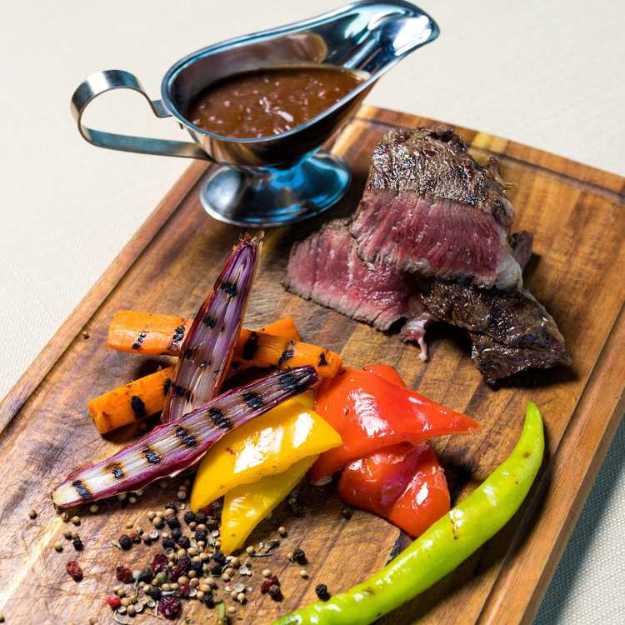
Remember, practice makes perfect and every steak is an opportunity to refine your skills.
So, fire up that grill, invite some friends over, and let the aroma of perfectly grilled steak fill the air.
Happy grilling!
Related Grilling Articles You'd Enjoy!

